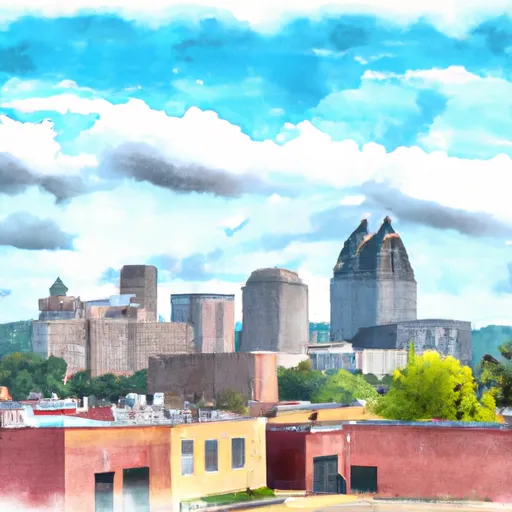°F
°F
mph
Windspeed
%
Humidity











Jefferson City, Missouri, the capital of the state, is located in the central part of the state along the Missouri River. The city experiences a humid continental climate, characterized by hot summers and cold winters. Summers are typically warm and humid, with temperatures averaging around 85°F (29°C), while winters can be cold with average temperatures around 30°F (-1°C). Precipitation is fairly evenly distributed throughout the year, with the highest rainfall occurring in spring and summer.
Being situated along the Missouri River, hydrology plays a significant role in Jefferson City. The river provides opportunities for boating, fishing, and other water-based activities. Additionally, Binder Lake and the smaller Moreau River offer further recreational opportunities for outdoor enthusiasts.
The city is surrounded by numerous parks and outdoor spaces, including the sprawling and picturesque Jefferson City Greenway Trail, which provides opportunities for hiking, biking, and wildlife observation. Other notable outdoor attractions in Jefferson City include the sprawling 630-acre Runge Nature Center, which offers miles of trails and educational exhibits, and the Katy Trail, a popular hiking and biking trail that stretches across the state.
Overall, Jefferson City offers a diverse range of outdoor recreation opportunities, complemented by its unique climate and hydrological constituents, making it an appealing destination for nature lovers and adventure seekers alike.
Weather Forecast
Jefferson-City receives approximately 1063mm of rain per year, with humidity levels near 84% and air temperatures averaging around 13°C. Jefferson-City has a plant hardyness factor of 6, meaning plants and agriculture in this region thrive during a short period during spring and early summer. Most plants will die off during the colder winter months.
Regional Streamflow Levels
193
Cubic Feet Per Second
62
Cubic Feet Per Second
154
Cubic Feet Per Second
10
Cubic Feet Per Second
Nearby Camping
| Camping Area | Reservations | Toilets | Showers |
|---|---|---|---|
| Moro Bay State Park | |||
| Grand Marais County Park | |||
| Downtown Riverside RV Park | |||
| Willow Beach | |||
| Pine Bluff Aresenal Military | |||
| Camp Robinson RV Military |



